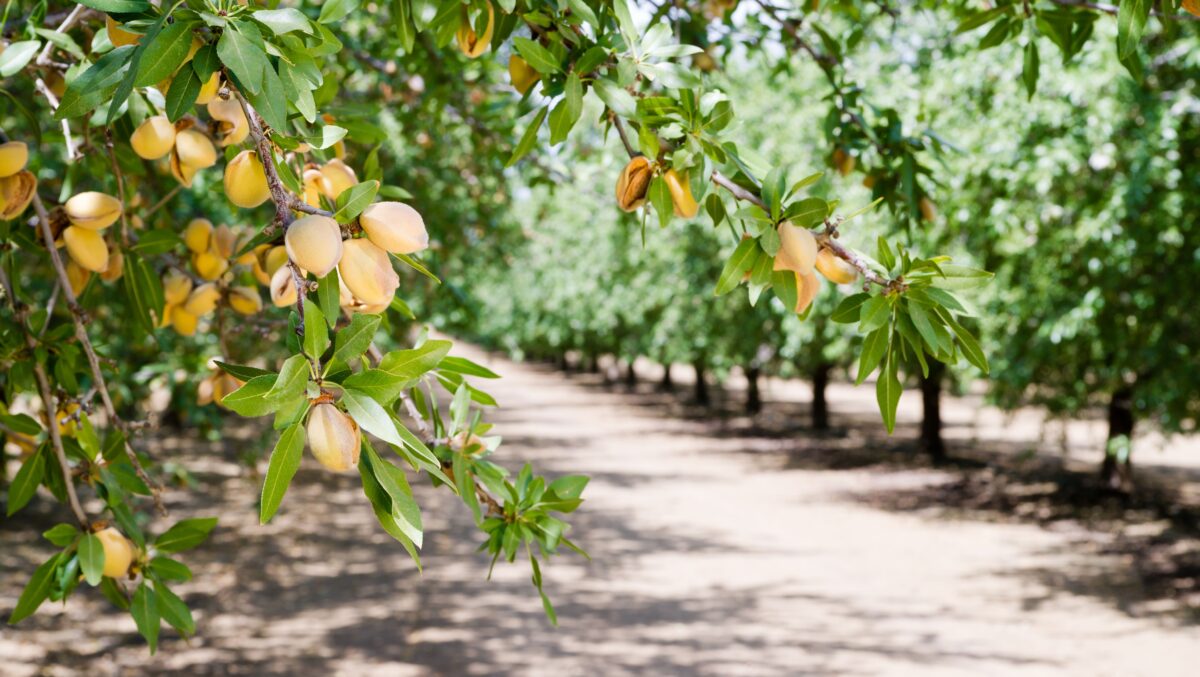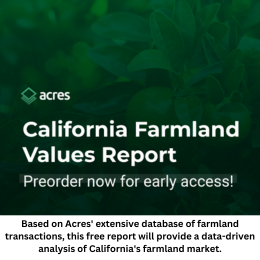November 13, 2023
By Lynda Kiernan-Stone, Global AgInvesting Media
Launched in 2013 by Jeff Conrad, with Carolyn Bailey, and Ken Warlick, AgIS Capital is a Boston-based, employee-owned boutique farmland investment management firm focused on the US permanent cropland sector.
Over the past ten years, the firm has established an impressive track record of acquiring and managing high-quality, investment-grade farmland assets and, when a value proposition presents itself, related agricultural commodity processing assets.
Currently the firm is focusing on U.S.-based permanent cropland, explaining that they view the sector as being more aligned with the risk and return targets of institutional investors, but added that they also strategically review offshore opportunities that have the potential to be complementary to their U.S. holdings. However, this description does little to convey the firm’s wide-reaching accomplishments.
“As I look back over the first decade, I am proud to say we have surpassed our initial objectives, and I’m optimistic about the future,” said Conrad. “In 2013, Carolyn, Ken, and I bootstrapped the firm starting out with just four employees working out of a small office in Boston’s Back Bay. Since then, we have raised and placed more than $1 billion of institutional capital in prime U.S. farmland investments.”
“Our team of top-notched talent has grown from four to 27 people located strategically throughout the United States. We have established our farm operations headquarters in Turlock, California, in the state’s Central Valley – the world’s most productive agricultural region. We have become an SEC registered investment advisor, and a signatory to the United Nations’ Principles for Responsible Investment. We helped launch Leading Harvest, the world’s first independent, third-party certification standard for agriculture investments, and we have built a formidable asset management team that is overseeing several investment platforms where we are growing 10 commodities from wine grapes and tree nuts, to olives, apples, and cherries. Finally, we have expanded our product line to include separate accounts, one-off deal focused investments, and a large open-ended vehicle.”
The valuable thought leadership born of such a history is now being shared by AgIS Capital through the launch of its State of the Harvest Report – a publication authored by Dr. Cody Dahl Ph.D., vice president of acquisitions and investment strategy – that provides an overview of select commodity markets and how they are affected by and reacting to current global political and socio-economic conditions.
“The first issue is almonds, walnuts, and pistachios, but next year we’ll probably break out and do pears, apples, cherries, and maybe wine grapes,” Dahl told GAI News. “It will focus more on commentary on the general ag economy, and then permanent crops in particular, including highlights concerning some facets of permanent crop markets that may be of interest – not necessarily talk about returns, as much as developments, that occurred over the season.”
This first issue opens with a sobering overview of our current global socio-political and economic reality. Dahl goes on to note that despite these conditions, the upcoming year may be the best time to invest in almonds, walnuts, and pistachios.
“There’s always market ebbs and flows,” said Dahl. “And in agriculture, I’ve written this in our articles all the time – high prices cure high prices. In particular, we’re seeing not just the prices as a result of oversupply, but lower prices because of strong interest or strong exchange rates.”
Dahl goes on to explain how interest rates, a pre-COVID period of acreage expansion, then the pandemic, supply chain issues, and high ending stocks all combine to give the impression of an industry in disarray. However, he added that on the horizon there is the Sustainable Groundwater Management Act in California – a factor that AgIS Capital predicates its investment strategy on – reflecting the state’s attempt to bring groundwater back into balance through legislation and limiting groundwater pumping.
“We believe that there’s a substantial number of acres that are in areas that do not have sufficient water, and that there will be a lot of trees that will be removed,” said Dahl. “We positioned our portfolio such that we are in areas that have ample surface water. So as bad as everything looks right now, it may be the time to get in, because you’ve got farmers making decisions and asking, do I want to ride through this for another two, three years?”
“The opportunity to get in [to permanent crops] is going to be, in my estimate, this next year and possibly into the first half of 2024 or 2025.”
Dahl also addresses a development from the consumer-end of the value chain – the rise in popularity of new weight loss drugs such as Ozempic, called GLP-1s.
“Given the substantial proportion of people in the U.S. who are overweight or obese, large-scale adoption of GLP-1s could drastically alter consumer demand for food,” stated Dahl in the report. “Despite the cost, Trilliant Health reported that U.S. healthcare providers wrote 9 million prescriptions for GLP-1 medications during the fourth quarter of 2022. Recently released research from Morgan Stanley estimates that seven percent of the U.S. population – 24 million people – will take GLP-1s by 2035.”
However, Dahl goes on to explain that although there is no empirical, peer-reviewed study providing an inference about how these drugs might affect food expenditures, existing research has found an increase in consumption of healthy foods by people on weight loss medications, with 71 percent of people taking GLP-1s becoming more aware of the nutrition in their foods and beverages since beginning the medication.
“When you’re going to be lowering your calorie count by 20 – 30 percent of what you ordinarily consume, I’ve wondered, are they going to be consuming more nutritious foods or just reducing all foods across the board?,” commented Dahl.
“From initial surveys, it appears that fruits and vegetables, weight loss management foods, poultry, and fish are the types of foods the focus population is consuming more of, not less of. At the same time, confections and carbonated sugary drinks, cookies, and baked products – you’re seeing a 70 percent reduction.”
These are simply highlighted examples of the insights included in this initial report. Dahl provides a deep dive into the market conditions (past, present, and potential future) along with the headwinds and tailwinds being faced by each commodity – in the end determining, “This could be a good time to reposition some portfolios and get in.”
You can learn much more by accessing the first State of the Harvest report here, and look forward to gaining further valuable insights from AgIS Capital as it releases future issues throughout 2024.
~ Lynda Kiernan-Stone is editor in chief with GAI Media, and is managing editor and daily contributor for Global AgInvesting’s AgInvesting Weekly News and Agtech Intel News, as well as HighQuest Group’s Unconventional Ag. She can be reached at lkiernan-stone@globalaginvesting.com.
*The content put forth by Global AgInvesting News and its parent company HighQuest Partners is intended to be used and must be used for informational purposes only. All information or other material herein is not to be construed as legal, tax, investment, financial, or other advice. Global AgInvesting and HighQuest Partners are not a fiduciary in any manner, and the reader assumes the sole responsibility of evaluating the merits and risks associated with the use of any information or other content on this site.

Let GAI News inform your engagement in the agriculture sector.
GAI News provides crucial and timely news and insight to help you stay ahead of critical agricultural trends through free delivery of two weekly newsletters, Ag Investing Weekly and AgTech Intel.




